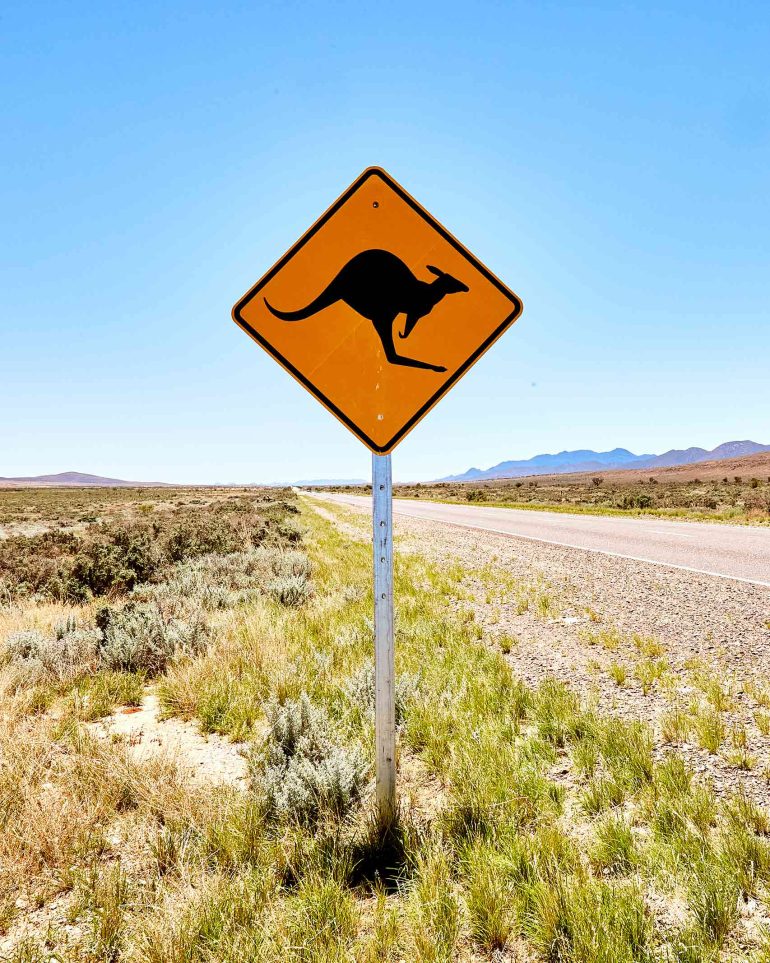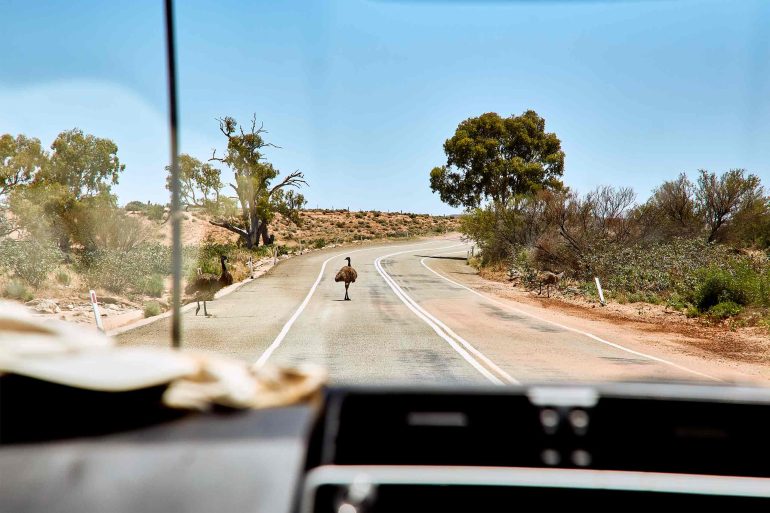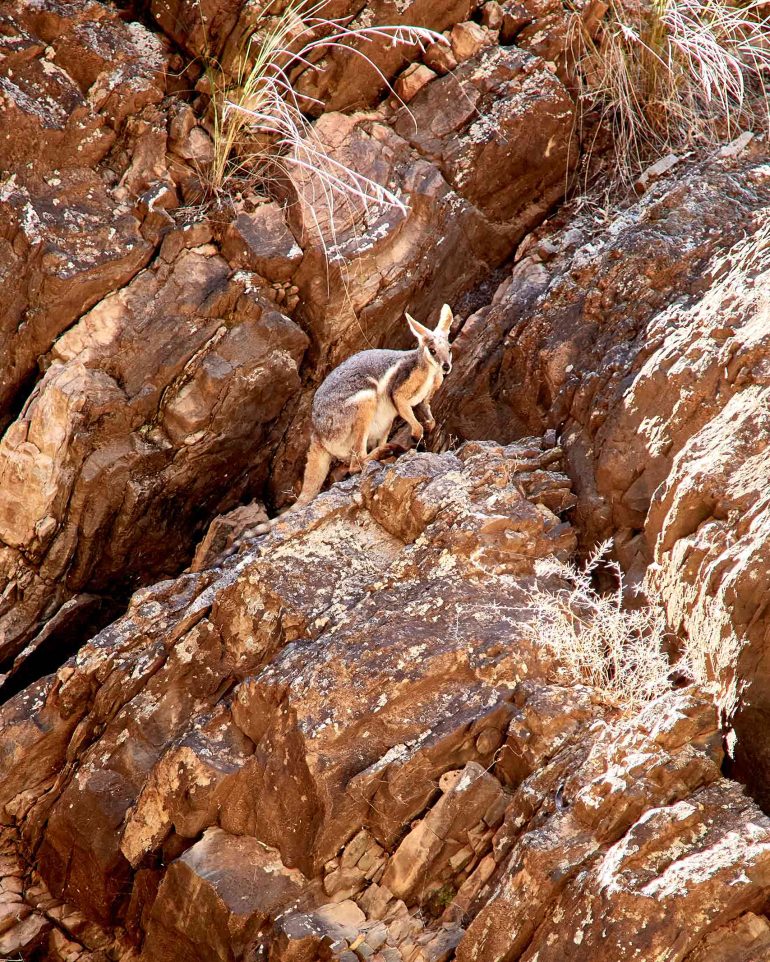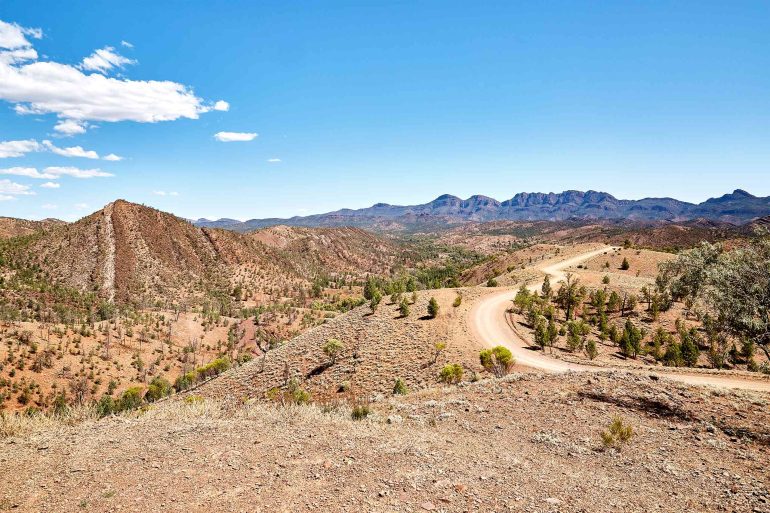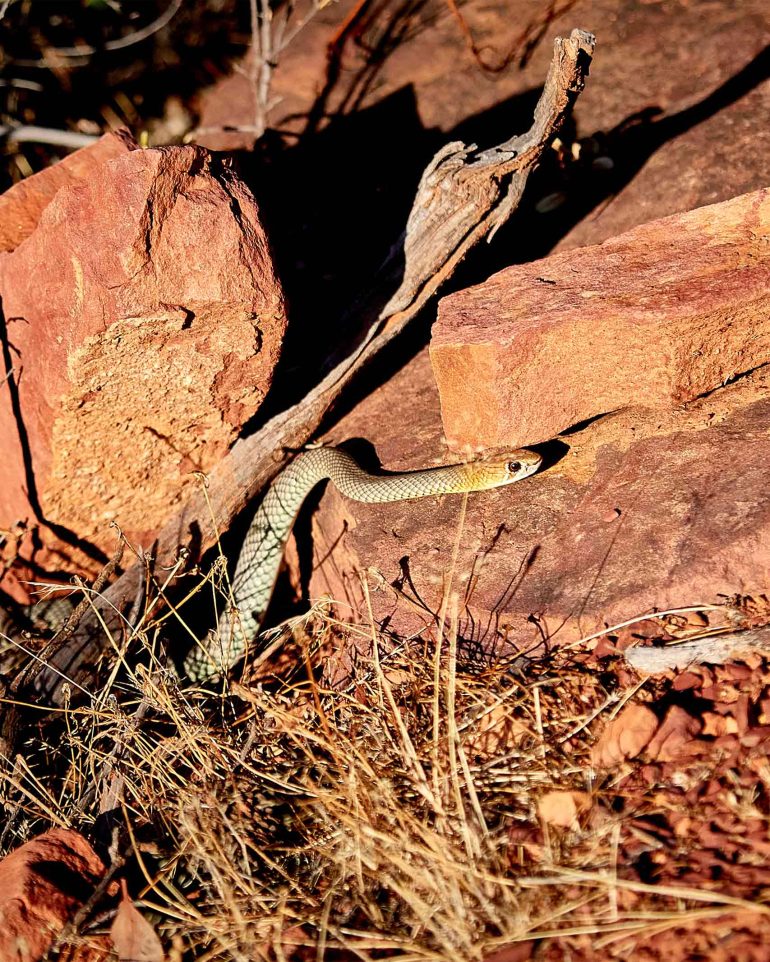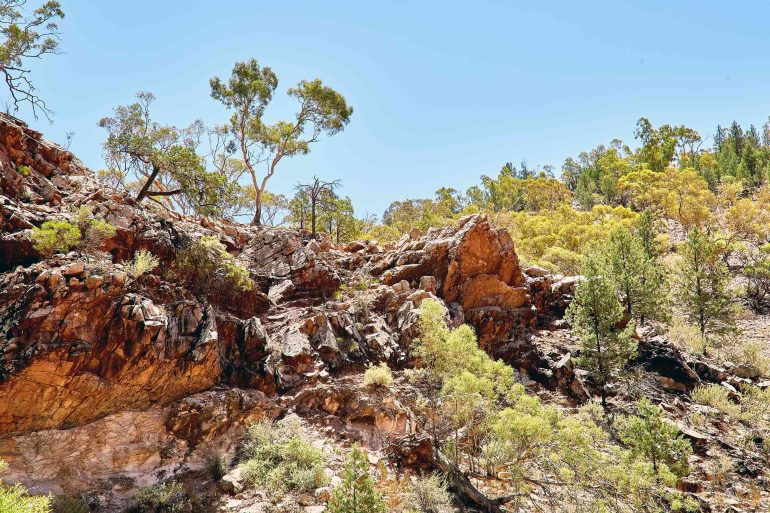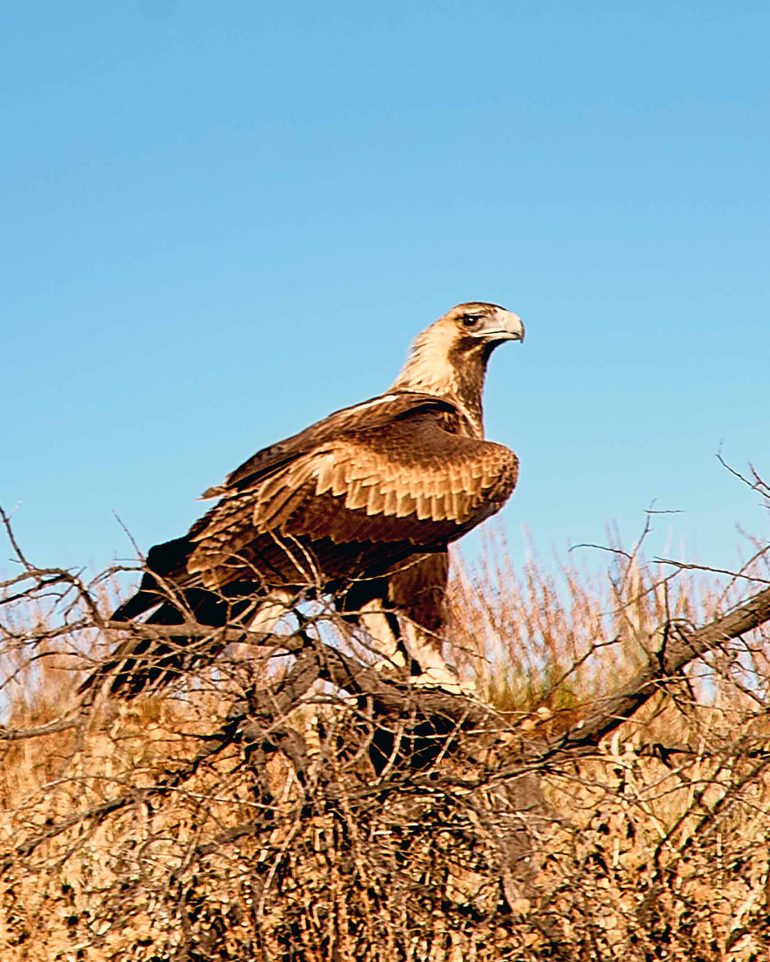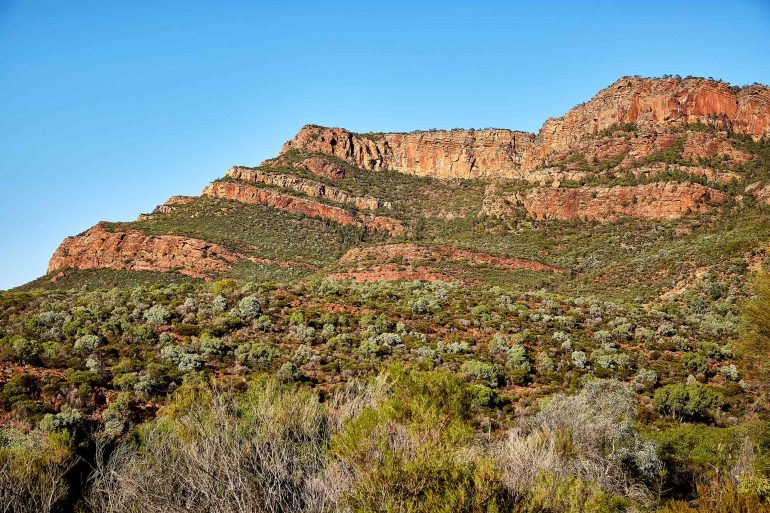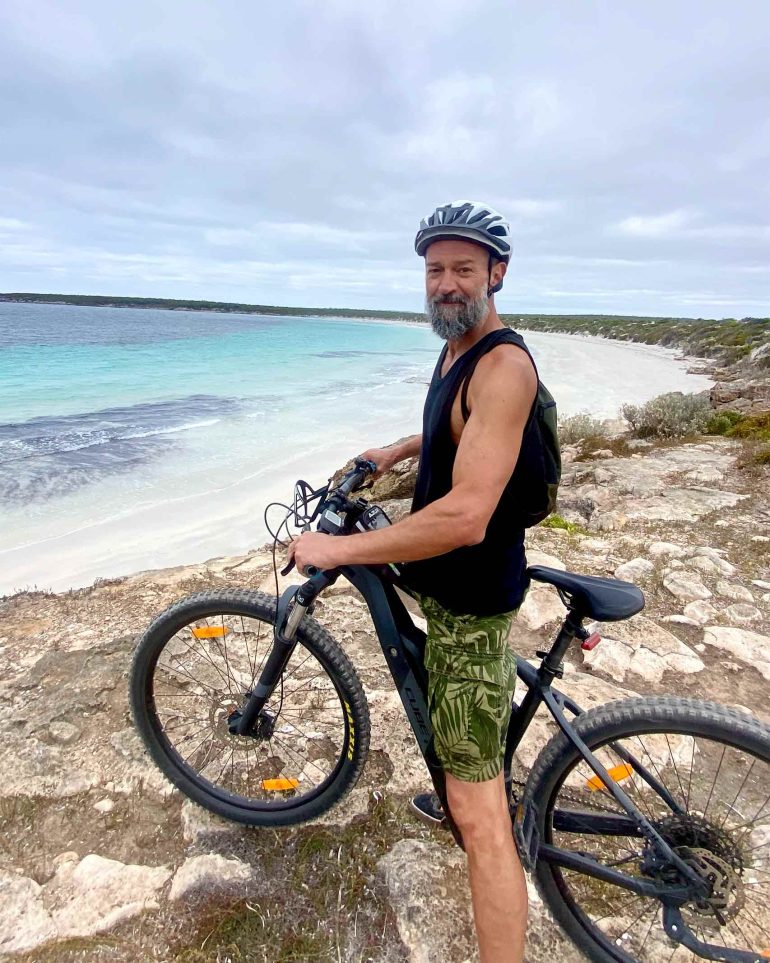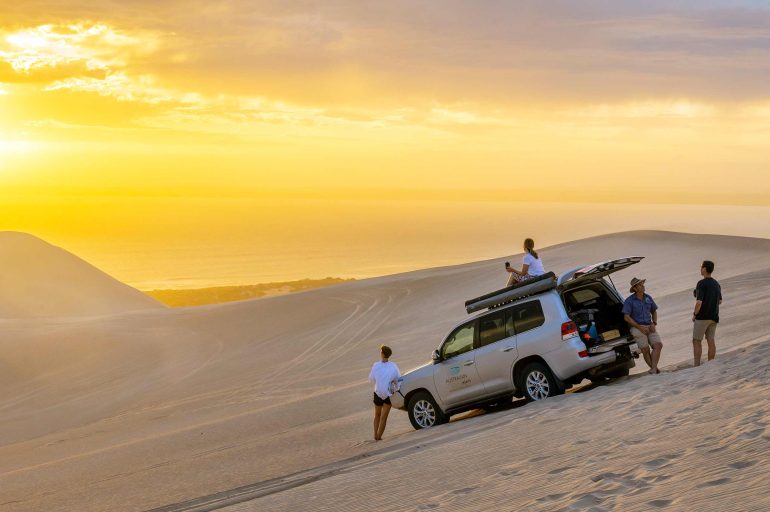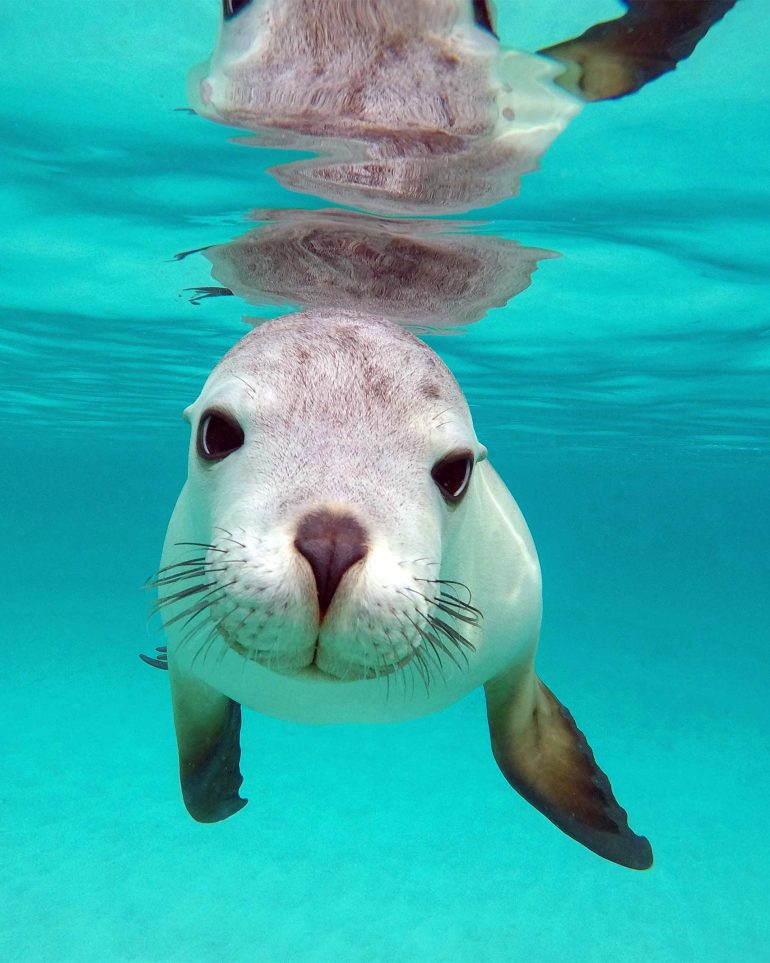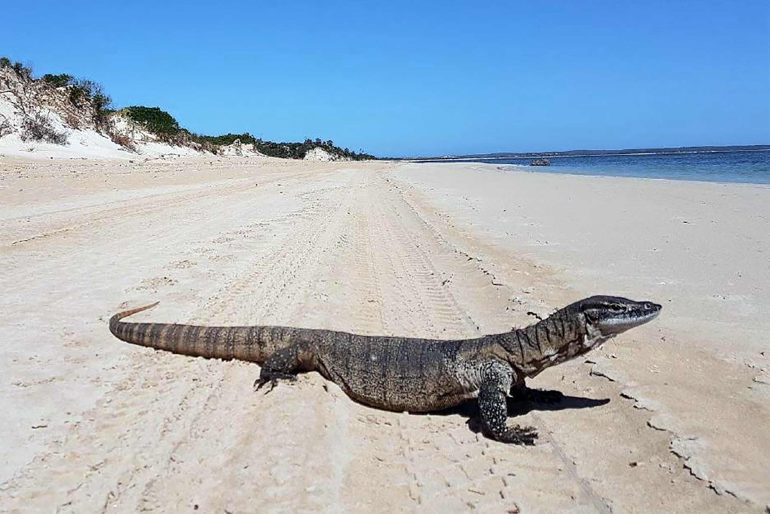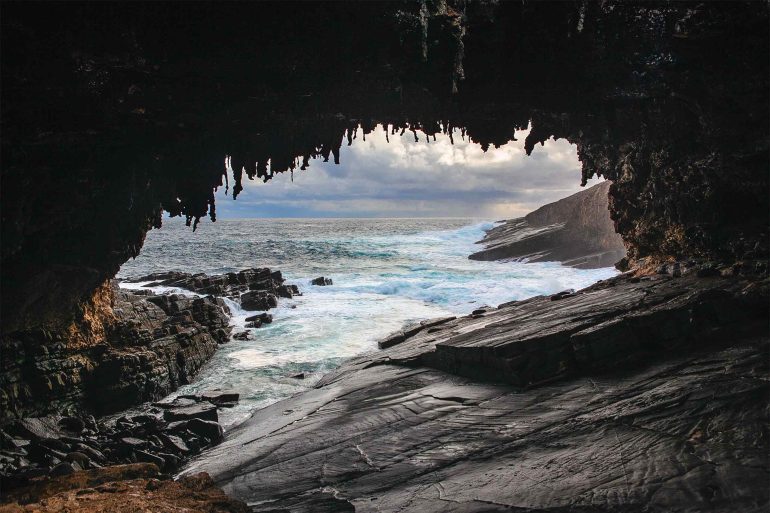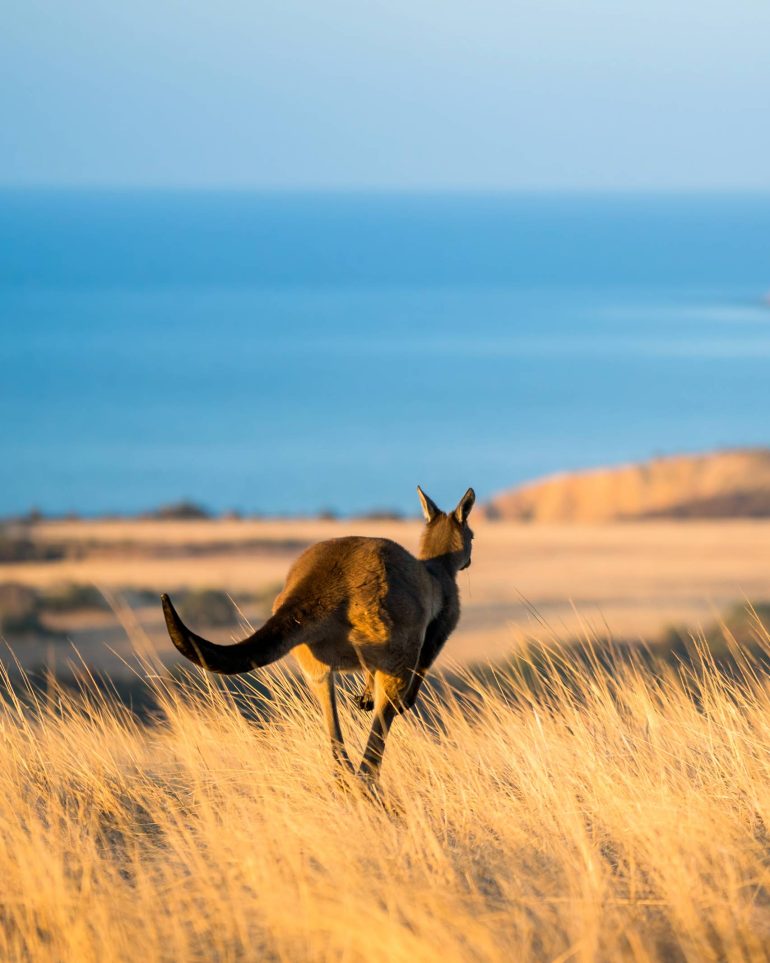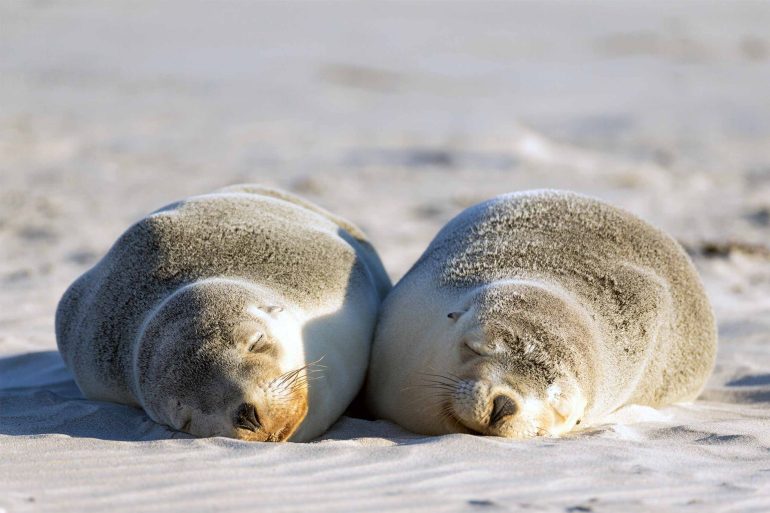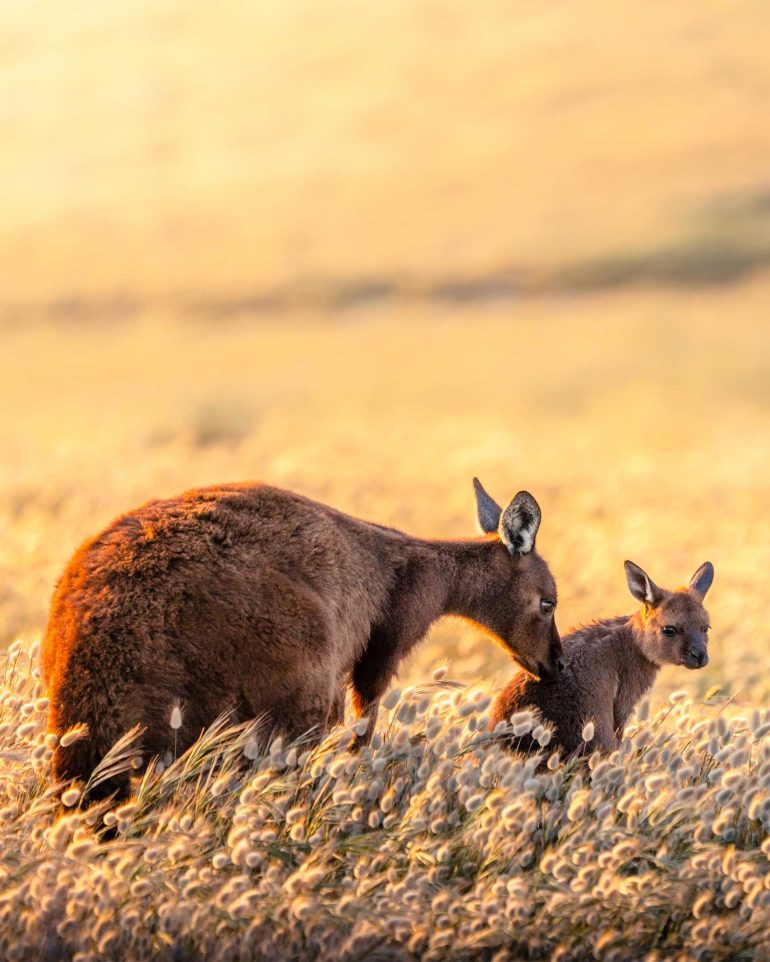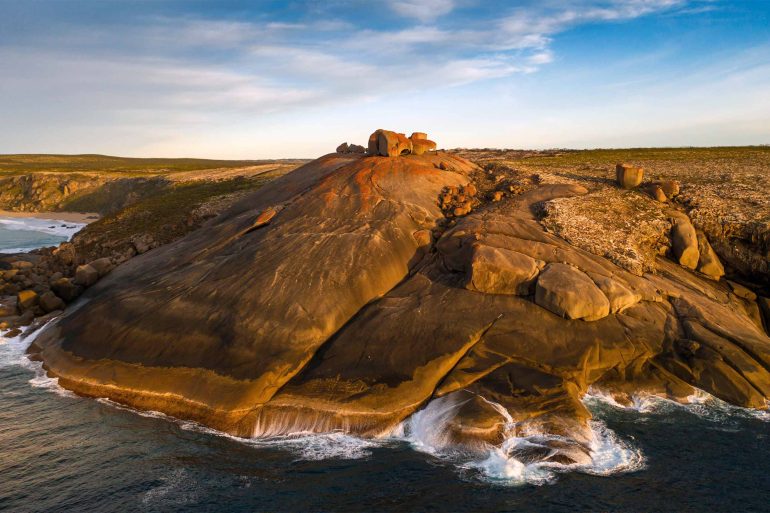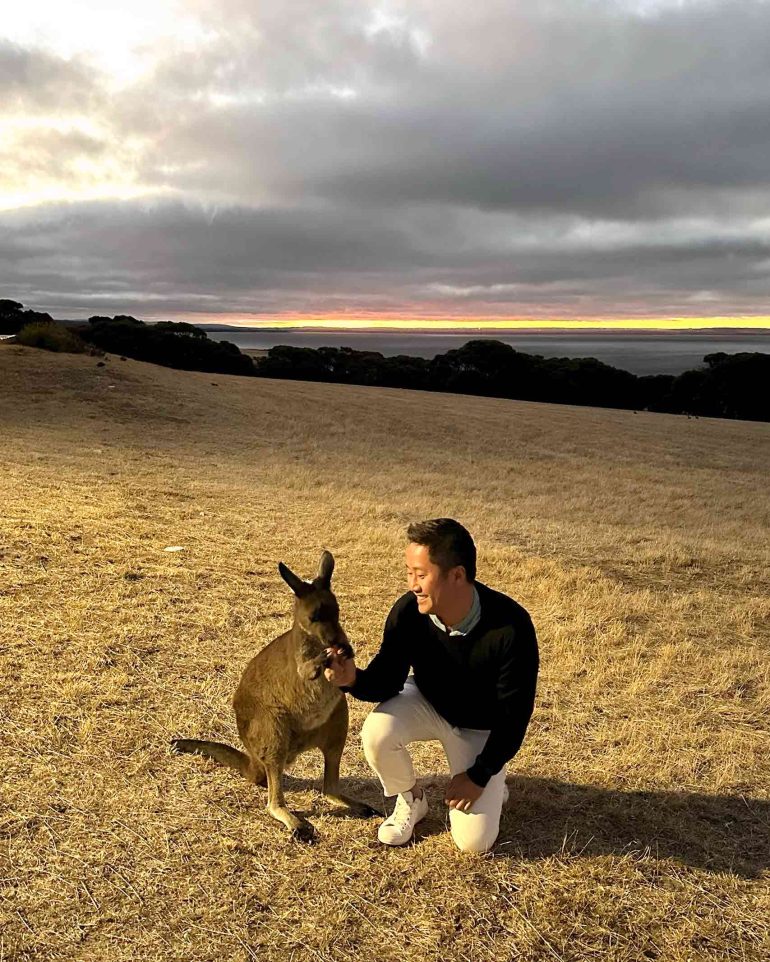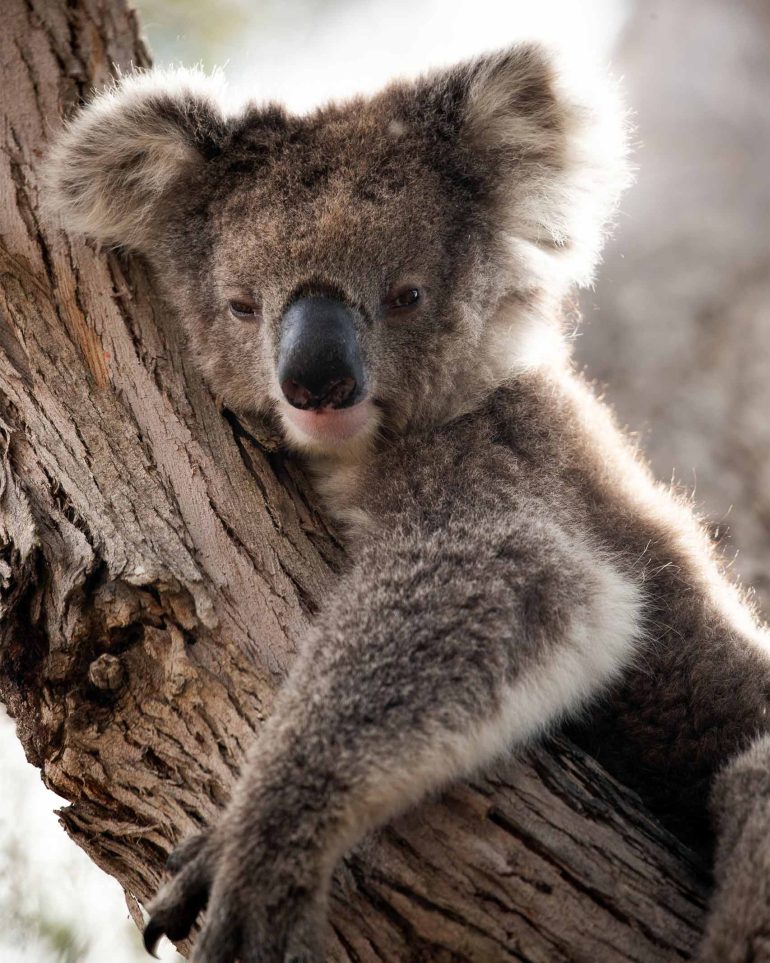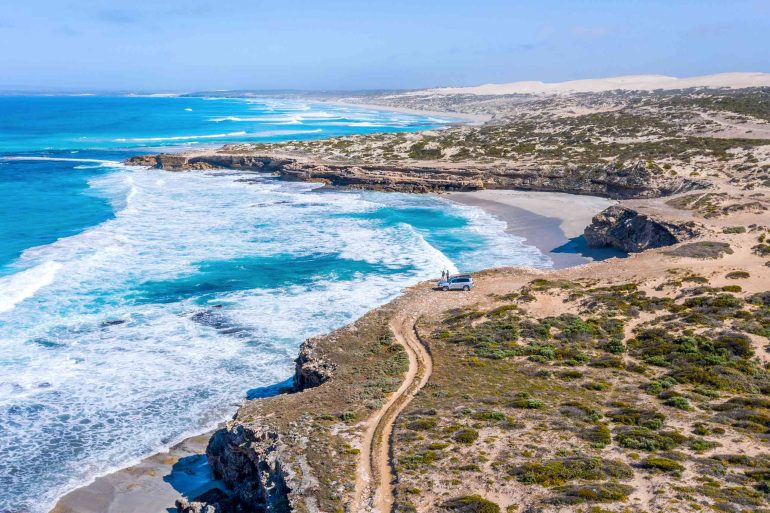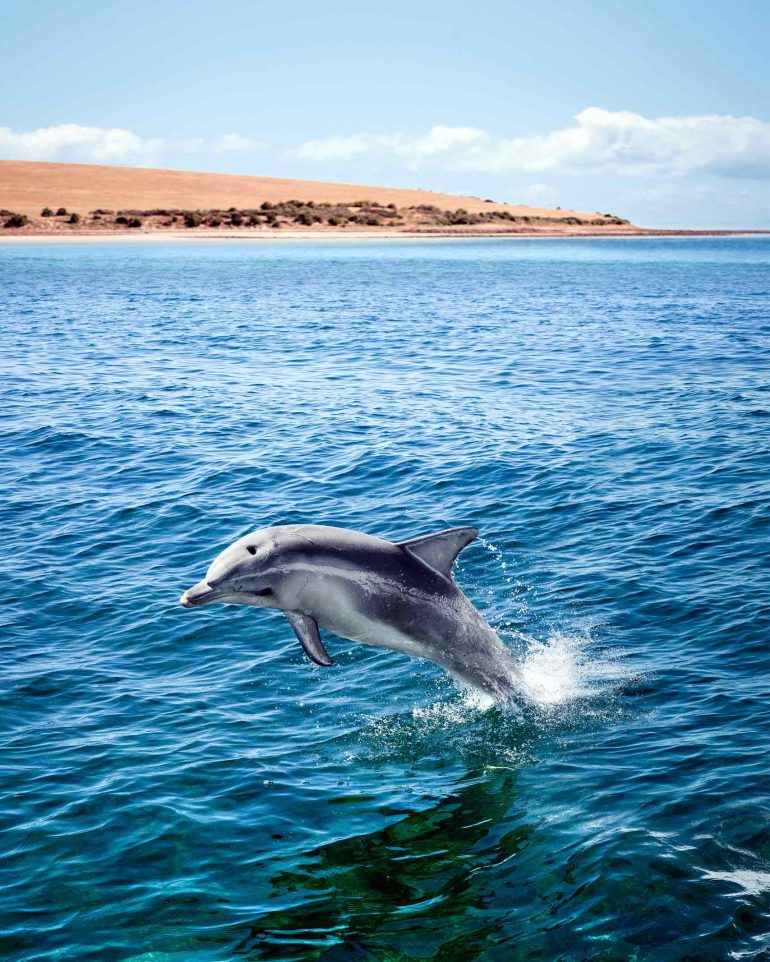With just 1.7 million people in 380,000 sq miles/985,000 sq km, South Australia is flush in vast, open spaces, playgrounds for abundant wildlife, intriguing flora and visitors by boat, bike, 4WD or on foot. We strike out for three very different destinations to get up and close with South Australian nature.
Kangaroo Island
When I tell Adelaideans I am visiting Kangaroo Island, they beam. For them, the place evokes happy childhood memories of suncream-scented summers, riding the ferry, hidden beaches, collecting sand-dollar shells and swimming in the Indian Ocean.
I fly in just 45 minutes from the city to Kingscote, a sleepy town of 1,800 people, ‘founded’ circa 1836 when the first Western whalers arrived. The indigenous Ramindjeri, Ngarrindjeri, Kaurna and Barngalla people are believed to have lived here around 16,000 years ago, mysteriously abandoning it one day, before rising sea levels separated the small (relatively speaking – it is actually seven times Singapore’s size) island from the rest of Australia. Today, First Nations mainlanders refer to it as Karta Pintingga, ‘island of the dead’.
Kangaroo Island was ravaged by bush fires in 2020, but has risen again. Some biologists even say the fires did good, with species of flora and fauna once thought extinct returning and thriving. A trip here is all about reconnection with nature, touring incredible landscapes and sheer escapist relaxation. Of the island’s 50 or so beaches, some have been voted among Australia’s best.
Five hundred million years of geological tinkering have also created extraordinary scenery. In Flinders Chase National Park stand Remarkable Rocks, an outdoor installation of granite boulders by artist Mother Nature. Admirals Arch is an awe-inspiring cave formation, whose abundant stalactite-like formations are the petrified roots of ancient trees. Drama meets majesty here, as ocean waves pound the rocks, although resting long-nosed fur seals seem utterly unbothered. Many more can be seen at Seal Bay, home to Australia’s third largest sea-lion colony. On land, koalas, wallabies and kangaroos prosper as never before and, while populations suffered in the fires, the survivors are said to be stronger and flourishing free from disease and predators.
The humans here are pretty wonderful too. My guide Paul wandered the planet in search of the perfect surf break, until 30 years ago he found his true home here – a seduction story you’ll hear echoed by many islanders. They also share a palpable passion for destination dining, local produce, wine-making, gin-distilling and world-leading eco-hospitality.
Flinders Ranges
Evidence of human activity dissolves as we reach the vastness of South Australia’s outback. Our destination is the Flinders Ranges, one of the state’s most spectacular and untouched regions, characterised by dramatic desert topography and punctuated by rugged ridges and features such as the towering Wilpena Pound, a tilted rock amphitheatre that glows fiery red at sunset. At 11 by five miles/ 17 by eight kilometres, it’s monumental.
En route, long straight roads with barely any traffic tempt you to take your eyes off the speedometer and gaze across the changing landscape. But an encounter with a highway patrol officer (and a $500 fine) convince us to engage the cruise control and keep our attention on the road. Even then, close encounters with spectacular animals greet us. A wedge-tailed eagle swoops down past our windscreen, its 2m/6½ft wingspan and formidable talons outstretched to land on a gnarled tree nearby.
This is the first of many such sightings of awe-inspiring creatures. A few clicks later, we have to slow to allow nonchalant emus to cross the road, while at dusk red and western grey kangaroos seem to materialise out of nowhere. A ridiculously cute wallaby poses on the side of a rock just long enough for a photo, and noisy cockatoos swoop and squawk around our campsite in the early evening. There’s also a slightly too-close-for-comfort meeting with a delicate but deadly brown snake as we trek to Akurra Adnya (Arkaroo Rock).
It’s humbling and grounding to be here, especially when we hike into the Ikara-Flinders Ranges National Park, which we seem to have to ourselves. Otherworldly prehistory prevails. And although this is Adnyamathanha Country, the ancient landscapes bring to life the ngartji system, a tradition of South Australia’s Ngarrindjeri people, which Mark Koolmatrie of Kool Tours explained to me on a bush walk. By connecting with our mewi (our guiding inner self), often by spending time in nature, we can find our ngartji – our individual ‘totem’ creature, plant or other living thing – and become its protector.
Perhaps if we all sought such a connection rather than looking to tame and control our environment, we and the natural world wouldn’t be facing today’s existential threats.
Eyre Peninsula
“Shit enough for you, mate?” Flashing a full-beam grin, David ‘Lunch’ Doudle, owner of Australian Coastal Safaris (ACS), Eyre Peninsula’s slickest wilderness tour company, presents with an outstretched, perma-tanned arm Almonta Beach. It’s one of 12 ravishing, utterly deserted (okay, we counted seven other humanoids) and apparently endless white-sand strands splicing pellucid aquamarine waters with impossibly vast summer skies that we’ve visited in the two days I’ve spent with my host. He grew up camping and spear-fishing in the area before making sharing such passions with visitors his vocation.
We’re on state-of-the-art electric mountain bikes, rather than the muscular, Jay-Z-worthy 4WD in which yesterday we gave respectfully distanced chase to a family of emus legging it across the huge Sleaford-Wanna Dunes as we visited Mikkira Station, where kangaroos frolic and koalas dangle from manna gums like baubles on a Christmas tree. And off whose tailgate, having just fled a deadly brown snake in the historic farmstead of 19th-century Scottish settler Adam Borthwick, we enjoyed sunset charcuterie, cheeses and local sparkling wine.
Home turf of the Barngalla, Nawu and Wirangu peoples, the Eyre Peninsula alone has 1500 miles/2,400km – the distance from London to Athens – of coastline, much of it responsible for one of the most valued seafood industries on earth. (That the whole region has just 60,000 inhabitants makes exclusive access to vast swathes of wilderness pretty much standard.) My ACS itinerary also took me to Coffin Bay, where you can don waders, pluck farmed oysters from the sea and be shucking them in minutes.
Yesterday, I swam with Disney-cute sea lions courtesy of Calypso Star Charters, which also offers, to ballsier visitors than this health-and-safety enthusiast, cage-diving with great white sharks, of which these waters have one of the planet’s largest populations. And although I followed trails off-coast through pristine forested hinterland while on our bike tour, I’m aware of not yet having checked out the whale-watching, Gawler Ranges’ red earth and granite peaks, local wineries, world-class surf breaks, dramatic cliffscapes or Lake MacDonnell’s bizarre, bubblegum-pink waters (caused by halobacteria, biology fans). Next time…
www.tourkangarooisland.com.au |www.parks.sa.gov.au | www.kooltours.com.au | www.australiancoastalsafaris.com.au | www.sharkcagediving.com.au
Photography by Ben Goode, Chris Bray, Drea Chong, Elliot Grafton, Martin Perry, Rupert Mellor, Uwern Jong and courtesy of Calypso Star Charters and the South Australian Tourism Commission



